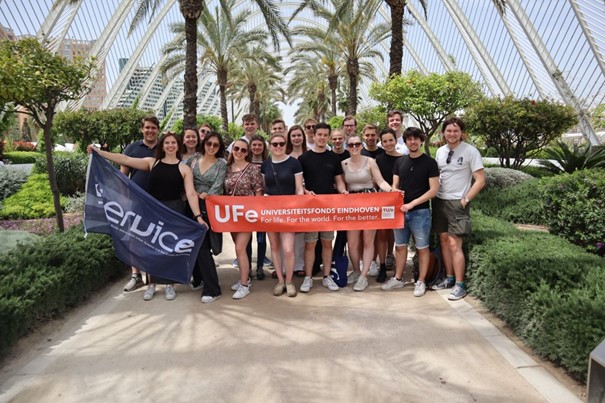
After two years without a study trip due to corona, SERVICE went on a study trip to Spain in 2022. From the 26th of April till the 4th of May, 24 Urban Systems & Real Estate students visited Barcelona, Valencia, and Madrid. The day before departure, a kick-off day was organized with our sponsors. The afternoon started with a lunch lecture given by Republiq about their research on where to build the necessary one million houses to solve the housing shortage in the Netherlands. Next, half of the group followed a case by CBRE about the fictional development of a World Trade Center at Eindhoven airport. The other half of the group followed a case by Dietz about participation in development projects and a housing associations workshop by Plateau. This was followed by a presentation in which the history of Spain was briefly covered and the program of the trip was unveiled. The final sponsor was Enginear, who unfortunately had to cancel their workshop. The day was closed with a drink in the Trappenzaal at which Tuna Ciudad De Luz performed, the Spanish student music association of the university.
On Tuesday, the trip really started when we gathered early in the morning at Eindhoven Centraal to travel to Maastricht airport together. After arriving at our first hostel in Barcelona, the first city tour was given by Diane, the committee member who was responsible for city tours in all three cities. The tour covered the historic part of the city giving insights into its ancient history. After the city tour, we climbed up a mountain to close the day with a well-deserved cold beverage while enjoying the magnificent view over the city under the setting sun.
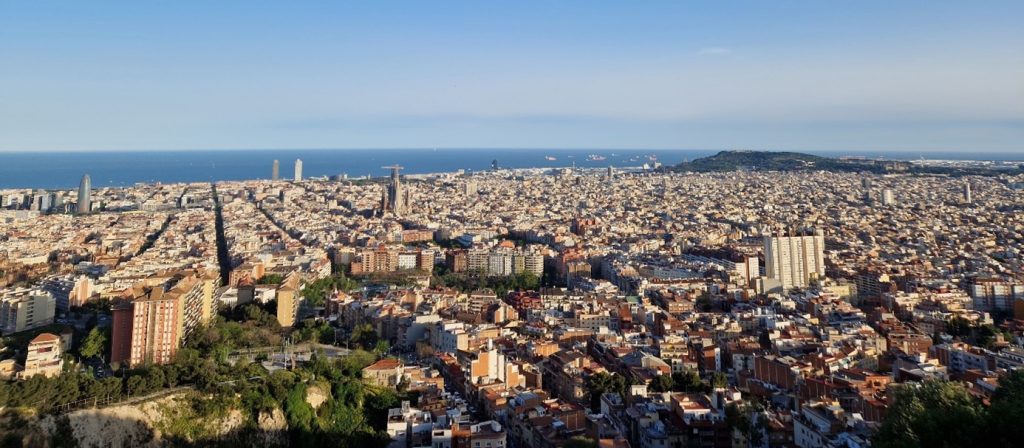
The second day started off with a second city tour, this time focusing on the central area with the famous la Rambla and Passeig de Gràcia where some of the most well-known buildings by Gaudi are located. After lunch, we travelled to the university where we joined a lecture by the urban planning agency 300.000 Km/s about the implementation of big data in urban planning. Afterwards, it was time for something fun. It was Kingsday and although being abroad it had to be celebrated of course. Therefore, we went to the Dutch restaurant Amsterdam to enjoy a Dutch dinner before going out.
The next morning, we visited the Port of Barcelona, Spain’s biggest and most important port for international traffic. Guide Natacha explained the logistics behind the port before visiting it ourselves on the elegant boat of the board of the port. After having some delicious tapas for lunch, we went to a bunker from the Spanish Civil War, which was fought from 1936 to 1939. The guide told us that the residents of Barcelona built hundreds of bunkers throughout the city to protect them from bombings coordinated by general Franco. We also heard that the mountain on which we closed the first day with a few drinks had been equipped with anti-aircraft guns in those days. This contrast and the compelling stories of the life in these bunkers left us deeply moved. In the evening, it was time to say farewell to the city and travel on to Valencia by high-speed train.
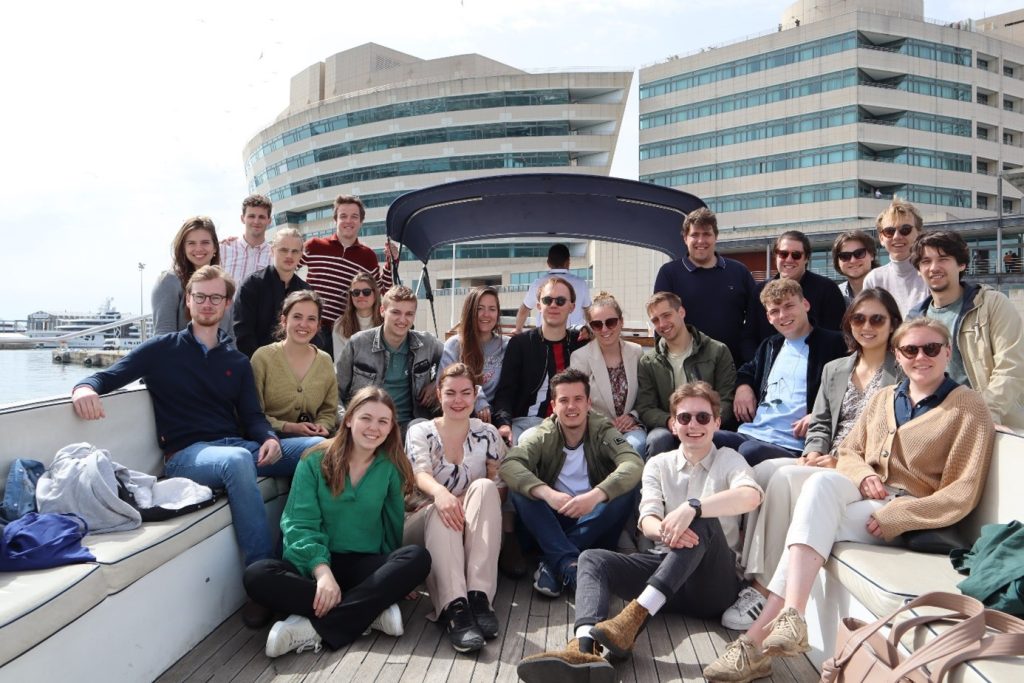
The first day in Valencia soon turned out to be one of the students’ most favorite days of the trip. We were picked up by a Dutch guide in the morning to travel to Requena, a historic town seventy kilometers from Valencia. A short walk through the narrow streets brought us to a historic winery in the heart of the town which is the home of winemaker Murviedro. Guide Ana enthusiastically led us through their thousands of years old caves in which wine used to be made. The day was all about the Bobal, a grape only grown in this region due to its suitability with the climate. Afterwards, we travelled to Vera De Estenas, a vineyard in Utiel, where we learned about the entire production process from grape to wine. Félix, the owner, proudly let us taste three of his best wines. After wandering through his beautiful garden with a marvelous view over his vineyards, we lunched in a traditional Spanish restaurant in the small town before travelling back to Valencia.
The next day, we explored the city of Valencia by bike. Diane showed us around the most important buildings and areas of the city, among which the gothic city gates, the 9km long Turia Park on a former riverbed and of course the famous La Ciudad de las Artes y las Ciencias designed by Santiago Calatrava. After enjoying Valencia’s most famous dish – paella – at the boulevard, we closed the day between fanatic football supporters in La Liga’s oldest football stadium Estadio Mestalla at the derby Valencia CF versus Levante UD.
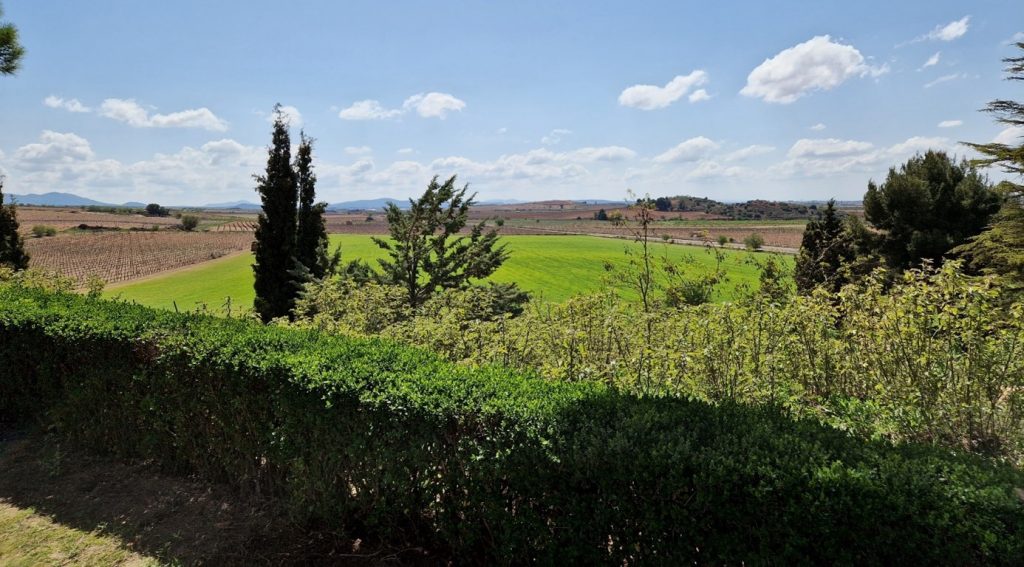
On Sunday, we left Valencia behind us. Using the high-speed train, we travelled to Madrid. With 300 km/h we glided through the inlands of Spain, seeing the sunrise over the hills. Arriving in Madrid, it was time to explore the city. Diane prepared another tour along some of the most important and impressive buildings of Madrid. Including the Royal Palace, multiple cathedrals, the opera house and much more. The first day was also the day to get to know the culture and nightlife of Madrid. After a lovely dinner with traditional tapas, we visited Teatro Kapital. A seven-floor nightclub in a former theatre, the largest in Madrid.
The second day in Madrid was on the 2nd of May, the regional holiday on which civilians rebelled against the French occupation of the city in 1808. Namely, Dos de Mayo. During this day, there are a lot of festivities in the city and the inhabitants of Madrid enjoy a day off. In the afternoon, we visited the Royal Palace. It is the largest palace in Europe with a sequence of impressive rooms each in a distinctive style inside.
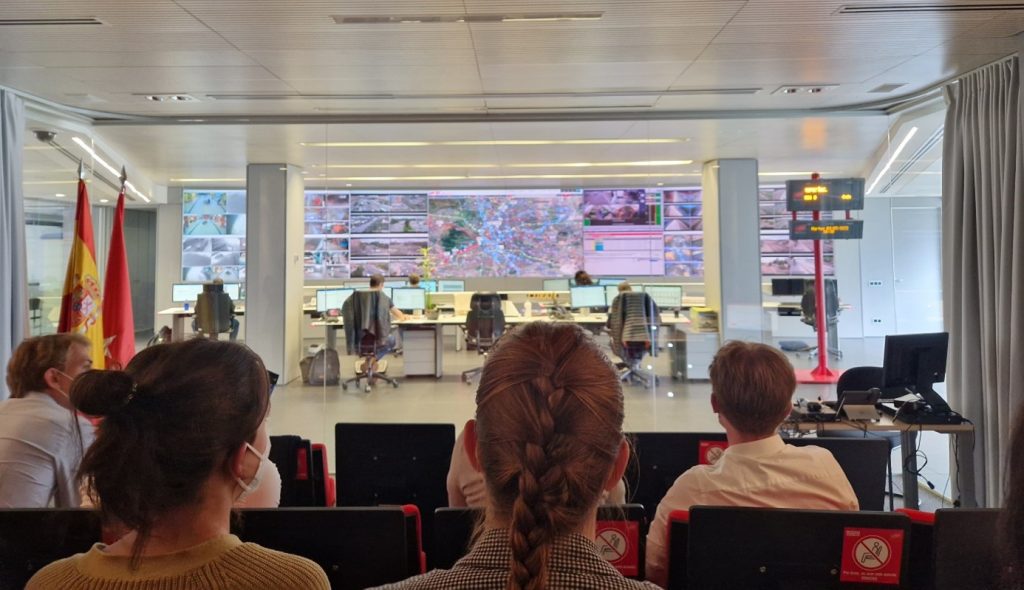
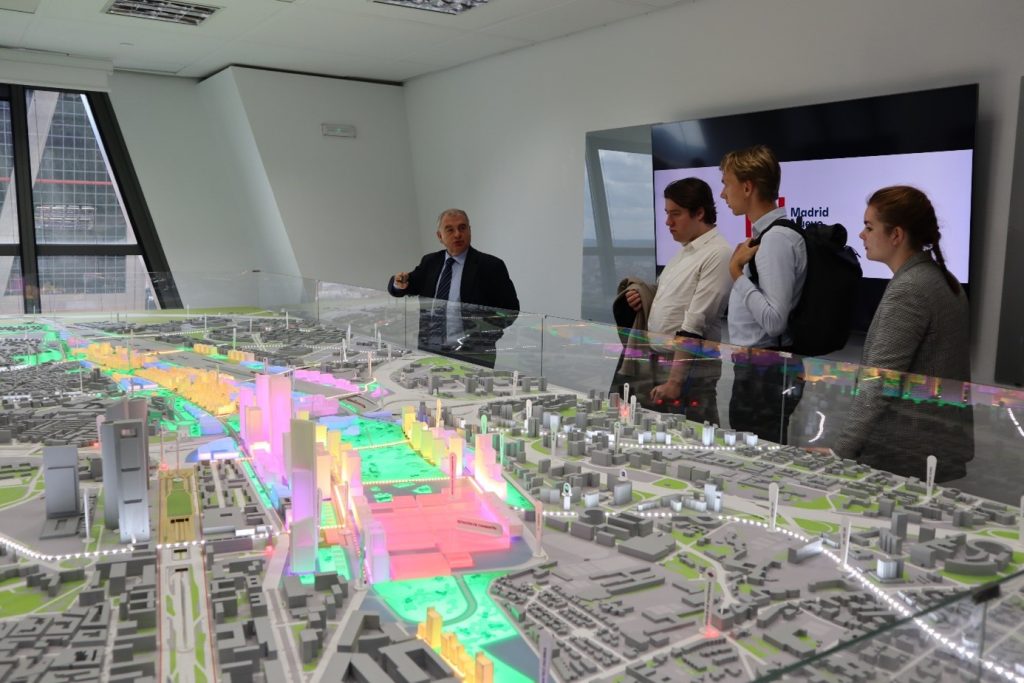
The next morning, we went to the control center of Consorcio Regional de Transportes de Madrid which manages public transport companies to develop a multi-modal public transport system in the city. The talk at the control center was followed by a site visit to the Avenida de America interchange – a large transport hub where commuters can change from regional transport to the urban transit system – for a technical visit. Afterwards, Diane gave her final tour around the richer area of the city ending at the 1.4km2 UNESCO world heritage Parque del Buen Retiro. Subsequently, we went to the business district in the north of the city where we visited Madrid Nuevo Norte in their impressive office tower. We were informed about the gigantic regeneration project of the central business district in which among others 10,500 dwelling units and a thirteen hectares park will be realized.
On the final day, we travelled further north to Valdebebas, where Hines showed us around a construction site of one of the apartment complexes in the large area development. After the visit, we only had to cross a few streets to arrive at the airport from where we flew back to Schiphol.
Late in the evening twenty-four happy and satisfied students arrived in Amsterdam now that trip had been a great success. I would like to thank the study trip committee – Joppe van Veghel, Diane Nelissen, Kees-Jan van den Bosch, Francien Zwietering and Tim Crijns – without whom there would not have been a study trip. Furthermore, I would like to thank University Fund Eindhoven, our sponsors CBRE, Enginear, Republiq and Dietz for financially supporting our terrific trip. Finally, I would like to thank all companies involved during the trip which made our great program possible.
Luc Snoeren
Chairman Study Trip and Treasurer SERVICE 2021-2022